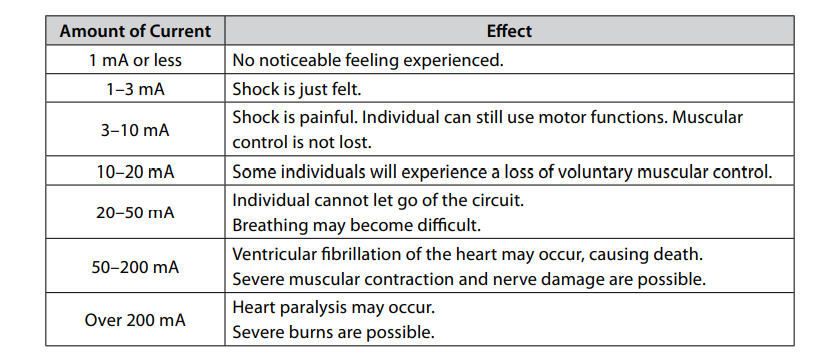LEARNING TASK 2 : Describe short-term hazards in the trades
Electrical hazards
No matter what your trade, on many jobs you will use or work around electrical equipment. Extension cords, power tools, and portable lights are among the many pieces of equipment that use electricity.
There are different types of electrical accidents, including:
- burns
- electric shock
- explosions
- falls caused by electric shock
- fires
While the human body is a conductor of electricity, it is not a good one. Burns caused by electric shock are a result of the heat caused by resistance to electrical current. Electrical burns often occur below the skin surface and can damage muscle and nerve tissue. In severe cases, electrical burns can be fatal.
The extent of injury due to electric shock depends on a combination of voltage and current and the body’s resistance to the electricity passing through it—a condition that changes from person to person. An electric shock occurs when you become part of the electrical circuit; when you contact a live portion of a circuit while also in contact with a lower potential such as ground.
Even though you may normally deal with small voltages and current, the values are never far away from lethal levels. You can receive a shock or burn from any common electrical circuit. The severity of the electrical shock depends on a number of factors:
- the amount of current that passes through the body
- the path that the current takes through the body
- type of voltage—AC or DC
- voltage strength
- the length of time that the current flows within the body
- condition of the skin and the body’s chemical make-up
- area of contact
Normal household current (plugs and light circuits) is generally limited by a circuit breaker to a value of 15 amperes. This device has been designed to trip and open a circuit if the 15 ampere value is exceeded and is designed to protect against property damage. It is possible to cause a fatal injury with a current flow of only 50 milliamperes (mA) or 5 one-hundredths of an ampere. The body is sensitive to relatively small values of current. In comparison, a 100-watt light bulb draws approximately 0.85 amperes (850 mA) of current when connected to a 120-volt source. Remember, we have 15 amperes available in each standard house circuit. Industrial circuits may have a required flow of several hundred amperes. In both cases, these are dangerous amounts!
Most fatal shocks occur when current passes through or near the heart. This is possible if the circuit passes from one arm to the other, from the right arm to the left leg, or from the left arm to the right leg. Figure 7 lists the effects of increasing amounts of current on the human body.


